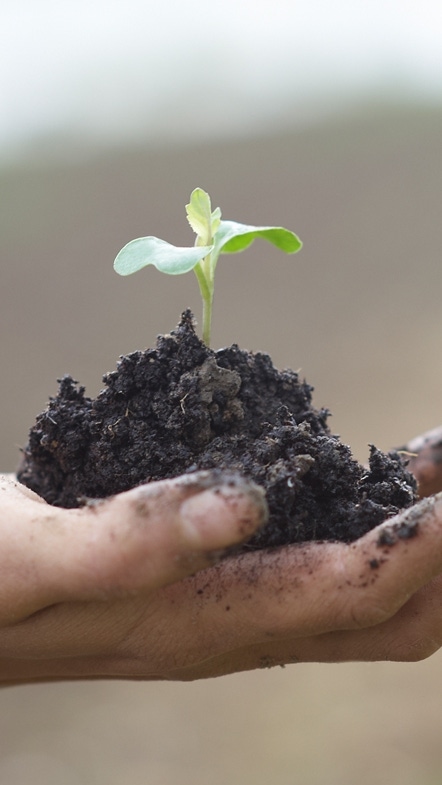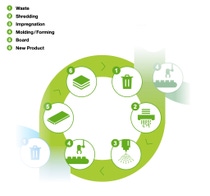PURE
- Differentiation through ecological progressiveness for more sustainable binder products which show low-emissions and are free of formaldehyde and APEO.

Dispersions & Resins
We at BASF are well aware of the key issues for nonwoven applications. For us, sustainability is more than just a trend - it is a development process. We strive to achieve a balance between the three dimensions of sustainable development: economy, environment and society.
By using our standardized Sustainable Solution Steering Method, we assess the sustainability contribution of each of our products and systematically steer our portfolio towards more efficient solutions. No matter which aspect is important to you, with our products you can benefit from first-mover advantage.
We are constantly increasing our portion of products that are available as BMB versions. The BMB approach represents an innovative drop-in solution, empowering BASF to offer our customers a reduction of their carbon footprints up to 100%, without requiring any reformulations or changes in their existing manufacturing processes. Renewable resources such as bio-naphtha or biomethane derived from organic waste, crops or vegetable oils are used as feedstock in the very first steps of chemical production.
Similar in concept to green energy, just for chemical production
Replacing fossil energy with energy from renewable sources is one important lever to achieve our climate protection goals and will have the largest impact on reducing our emissions in the coming years. With the increasing electrification of our processes, we expect our global electricity demand to at least double or even triple by 2040. In 2022, renewable energies accounted for 16% of BASF’s global electricity demand. At the end of 2022, 108 BASF sites worldwide were already partially or fully powered by renewable energy. By 2030, we aim to source more than 60% of our energy demand from renewable sources, which corresponds to the total electricity demand of BASF in 2021. Our BASF production sites for Fiber Bonding in Ludwigshafen, Hamina and Tarragona are also working on solutions to enable the switch to green energy.
Our BASF site in Hamina, Finland
The BASF site in Hamina has already completed its switch to 100 % green energy in 2022. With the switch to 100 % green electricity, BASF’s Hamina site reduced its scope 2 emissions by 14% or 313 tons of CO2 per year. The yearly CO2 savings equal approximately 11.5 million passenger car kilometers.
Our BASF site in Ludwigshafen, Germany
In the future our BASF site in Ludwigshafen, Germany will be supplied with green energy from various sources. BASF signed a 25-year Power Purchase Agreement (PPA) with ENGIE, effective as of January 1, 2022. The agreement includes the provision of up to 20.7 terawatt hours of renewable electricity by ENGIE. Additionally, BASF and Ørsted have concluded a power purchase agreement, under which BASF will offtake the output of 186 megawatts from Ørsted’s planned Borkum Riffgrund 3 Offshore Wind Farm in the German North Sea. The offshore wind farm will go into full commercial operation in 2025. The corporate power purchase agreement for offshore wind will run for 25 years. It will help cover the increased electricity needs of low-emission technologies for BASF and is a step towards BASF’s ambition of becoming carbon neutral by 2050. The share in the offshore wind farm Hollandse Kust Zuid (HKZ) further secures substantial green power volumes for BASF in Europe. In 2023, BASF, Vattenfall, and Allianz jointly inaugurated a 1.5 GW wind farm in the North Sea. HKZ is one of the largest offshore wind farms in the world and plays an important role in BASF's transition towards Net Zero. Around half of the electricity will be used to reduce the carbon footprint of our products at BASF sites in Europe and to power innovative, low-emission technologies. The subsidy-free offshore wind farm is expected to become fully operational in 2024.
We develop binders with minimized volatile organic compounds (VOCs). This improves occupational safety and enables health-compatible nonwovens. Our mission is to support you with the right solution according to your specific needs. That is why we introduced a new classification for our binders (PURE, PLUS and POWER) which provides an orientation with regard to the performance and sustainability properties of our products.
The sustainability criteria of PURE is mandatory for all products marked with PLUS and POWER. All classified products have been evaluated with BASF’s Sustainable Solution Steering Method and provide a substantial contribution to sustainability in the specific application.
Let’s shape the future with upcycling!
By upcycling reclaimed materials, like denim and clothes, and discarded materials, like spent coffee grounds, brewer’s grains, used paper cups and chopsticks, we extend the life cycle of these materials and give them new life as the building blocks for scores of new and more-valuable products. Furthermore, upcycling decreases our reliance on scarce natural resources, such as wood, while we can reduce CO2 by binding it in long-lasting products.











